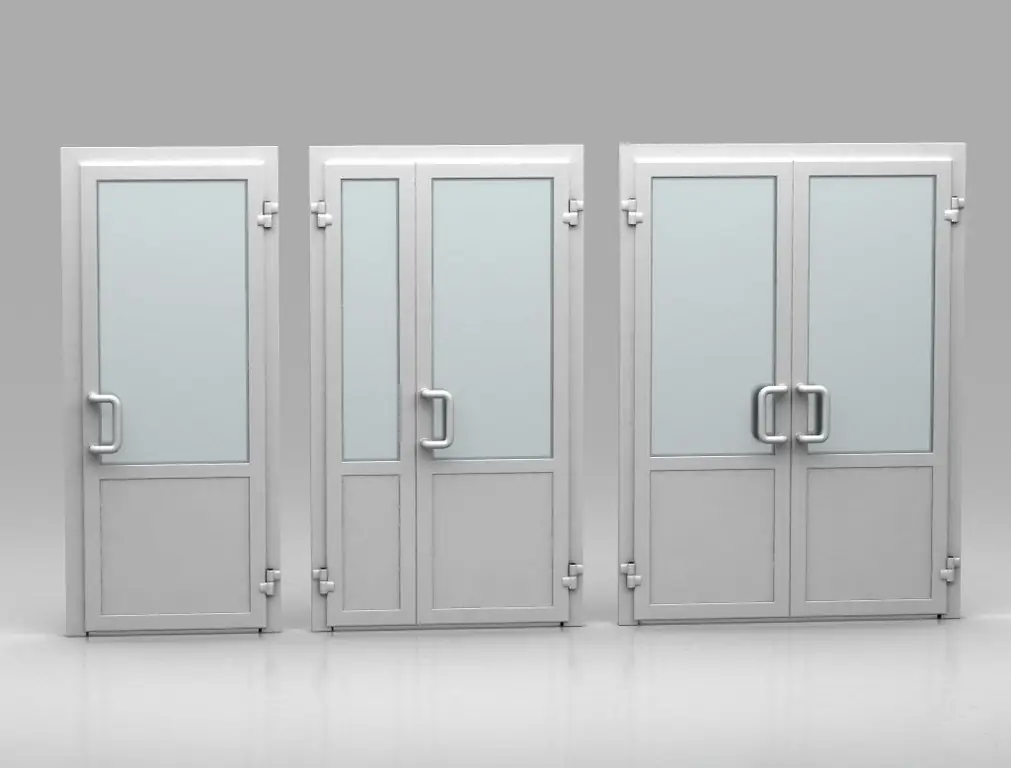
Table of contents:
- Author Bailey Albertson [email protected].
- Public 2023-12-17 12:53.
- Last modified 2025-06-01 07:32.
GOST for PVC doors: standard requirements and installation standards

During construction or production, established norms and standards are always taken into account, which make it possible to create safe, durable and durable products. This also applies to PVC doors, namely their manufacture and installation. Recommendations differ depending on the type of product, but GOST contains all the necessary information, taking into account the design features.
Content
-
1 What are the GOST requirements for?
1.1 Video: features of installing PVC structures in accordance with GOST
-
2 Plastic doors: production and installation in accordance with GOST
- 2.1 Requirements for door blocks
- 2.2 GOST for PVC interior doors
- 2.3 External PVC doors in accordance with GOST
- 2.4 GOST requirements for filling door leaves
- 3 GOST and PVC door marking
What are the GOST requirements for?
The set of rules and regulations relating to various construction, production and installation works is called GOST. This list includes many points, each of which contains recommendations for the manufacture or conduct of certain actions.
GOST also contains information on the production and installation of PVC doors. The standards include safety rules, optimal parameters and manufacturing methods, recommended installation practices and a list of standards that quality products must meet. If PVC doors were produced in accordance with the established rules, then they are distinguished by safety, long service life, and comfortable operation. Thus, the requirements of GOST are mandatory for compliance, as they are aimed at creating better quality products.

In the manufacture and installation of PVC doors, the requirements of GOST are taken into account
Before installing, building or manufacturing PVC structures, you should read these rules. It is impossible to know the whole set of quality requirements, so it is best to study only the necessary paragraph. For this, all sections of GOST are designated by a set of letters and numbers, and also have a designation in the form of a title.
Video: features of installing PVC structures in accordance with GOST
Plastic doors: production and installation in accordance with GOST
GOST 30970 contains the basic requirements that are taken into account in the manufacture of doors from polyvinyl chloride. This standard was approved in 2014 and includes norms for hinged, sliding and other types of structures. Requirements apply to all frame-type models, but not fire, bulletproof and other special-purpose options.

GOST takes into account the features of all frame doors
The collection of standard requirements classifies PVC doors according to five criteria:
- Appointment. Plastic structures belong to the "B" group, which includes all canvases that are installed inside different rooms.
- Fill type. Doors can be with glass or a dull plastic insert, and there are also combined models.
- Opening method. By design, the canvases can be hinged, sliding, single or double-leafed, double-leafed with different sides.
- Decorative finishing of profiles - color, pattern can be different.
- Opening mechanism and direction. Doors can be left or right, sliding, moving in any direction.
All terms are indicated in GOST, which make it possible to clearly define the purpose of a particular part of the PVC door system. The standards apply to every major element of the product.
Requirements for door blocks
According to GOST, door systems are created from profiles made of polyvinyl chloride and supplemented with steel inserts. This also applies to angle-type connections. In this case, the area of the complex from the box and the door should not be more than 6 m 2, and the maximum allowable area of each leaf is 2.5 m 2. If structures are being manufactured, the parameters of which exceed these standards, then their strength characteristics must be confirmed by tests, calculations taking into account the current standards.

PVC entrance doors are in great demand and are used everywhere
The main requirements for the manufacturing process and quality of plastic door systems are expressed in the following:
- The maximum permissible deviations of the parameters of door blocks are no more than +2.0 or -1.0 mm. The static load on the upper right angle of the folded canvases of the folding type products is no more than 1,000 N.
- Seams in the weld area should not be defective, untested or cracked. It is not allowed to change the shade of PVC at the seams.
- All reinforcing elements and inserts are fixed to the inner side of the frame with two self-tapping screws. The distance between the fasteners is no more than 400 mm. This figure for outdoor systems is 300 mm.
- The door leafs can be filled with glasses of increased strength. Multi-layer panels are also applicable.
- The gaskets of the cloth sealing must be resistant to atmospheric changes, mechanical stress and chemical agents. They allow for a snug fit, which can be adjusted by adjusting the fittings.

The comfortable operation of the PVC door depends on the correct installation
The PVC door installation standard was developed based on the analysis of the results of the operation of the units over many years. Therefore, the code of practice contains all the necessary information regarding this process. The main points are as follows:
- the materials used during installation must ensure tightness, no local or other freezing, resistance to operational loads, long service life;
- defective places of doorways must be putty, and all edges must have smooth edges, while if the walls have voids, then they are sealed with rigid foam insulation;
- materials must be environmentally friendly and safe for human health and the environment, waste disposal is carried out through industrial processing;
- the equipped layers of the assembly seam are assessed by a visual method at an illumination of at least 300 lux at a distance of 40 - 60 cm.
Such requirements for the installation allow you to control the quality of the manipulations of the masters for installing plastic doors. These standards apply to the installation of PFC doors and windows of any design.
GOST for PVC interior doors
Standards for the construction of internal and external plastic doors differ, since each type of system must correspond to the conditions of use. For internal structures, requirements are imposed to ensure safety, ease of use and aesthetic appearance of PVC products. Interroom systems are marked with a "B" symbol.

The requirements for PVC internal doors are lower than for external ones.
GOST 30971-2012 contains the main standards for PVC interior and exterior doors. A separate section for each type of structures is not provided, but in the items for installation and manufacture there are such requirements for DPV, such as:
- an internal door can be equipped with a threshold or not, and if such an element is present, then it must have a continuous contour in the lower horizontal section, and its fixation is carried out by mechanical connection of parts;
- the leaf in the assembled door block equipped with a threshold should not sag more than 1.5 mm;
- internal burglar-proof doors must withstand static loads on the sash area from 1300 N, applied to open the product can be more than 100 N;
- reinforcing inserts should not be docked or broken along the length; tiled or rolled, panel structures are used as panels for plastic doors;
- installation is carried out only in a flat, clean opening with solid walls without chips, potholes and dust, is carried out in stages in accordance with the technical map developed depending on the season, climatic features and the necessary operations to fix the door block;
- deviations on each side of the opening can be no more than 4 mm, the check is carried out by a hydraulic level, by measuring the diagonals of the opening, and also by a laser-type plane builder.
Internal structures made of polyvinyl chloride are mounted in a previously prepared opening. The work is carried out by professional craftsmen, and acceptance takes place taking into account the quality, evenness and the absence of large gaps.
External PVC doors in accordance with GOST
Requirements for the manufacture and installation of external doors are met as accurately as possible, because they protect the premises from dust, noise, cold, unauthorized entry.

Plastic entrance doors have better heat and sound insulation than internal doors
One of the mandatory requirements that high-quality external doors must meet is the multi-point locking system. This is especially true for products characterized as burglar-resistant structures. In this case, the distance between the locks should not be more than 750 mm.
Entrance canvases are equipped with door closers that ensure easy movement of the curtain and allow people with disabilities to move. The threshold requires special attention, which is made of aluminum with an anti-corrosion coating and is equipped with drainage holes. This allows you to make the doors easy to use and protected from moisture.

Entrance doors can be of any color and design
The main requirements for the manufacture and installation of PVC outdoor systems are expressed in the following:
- the recommended threshold height is 20 mm, if the parameter value is different, then this part of the structure should not become an obstacle to the movement of people;
- doors installed on escape routes from the premises must open outward, they can be single or double;
- it is allowed to use burglar-resistant structures of groups A and B, for which corner reinforcement parts and a multi-bar locking system with class 4 locks are used;
- outer door leafs must be equipped with a system of holes for drying the gap between the panels and other parts; two holes are provided in the lower and upper profiles during manufacture;
- when installing external canvases, materials that are resistant to atmospheric changes are used, the assembly seam cannot cause cold penetration into the room.
The outer webs must have a particularly strong filling, as well as a high degree of thermal insulation and tightness. These properties are present due to the use of high-quality materials for the manufacture of doors, careful installation and compliance with GOST.
GOST requirements for filling door leaves
Burglar-resistant external or internal plastic doors consist of profiles, fittings and have a filling, presented in the form of panels. These inserts can be made of glass or plastic.

PVC doors can be of any color and equipped with glass
GOST assumes the following features of high-quality filling:
- three-layer filling is represented by panels consisting of aluminum and plastic cladding sheets;
- single-layer filling is performed in the form of rigid foamed polyvinyl chloride;
- sheet thickness is at least 15 mm;
- installation and design of filling fixation units is performed in such a way that the possibility of breaking the canvas from the outside is not allowed;
- glasses with a height of more than 1250 mm, a width of more than 650 mm, and a thickness of less than 4 mm are not used.
If the door filling meets the basic requirements of GOST, then the structure will be as reliable and durable as possible. And the quality of installation and manufacture affects sound insulation, which is important for doors installed in private residential buildings.
GOST and PVC door marking
Each type of plastic doors and its features are indicated by a certain marking that corresponds to GOST. For example, the symbol "A" is used to mark the entrance external doors, "B" - the entrance internal doors from the stairwells, "C" - interior or simple internal systems installed to separate rooms.

External doors made of plastic are in demand because of their high performance characteristics.
According to GOST, PVC doors are also marked taking into account the purpose of the product and the filling of the door leaf:
- DNP - external doors with a PVC profile;
- DPV - internal with a profile;
- DPM - interior doors;
- filling is indicated: G - deaf, O - glazed, Km - combined, D - decorative;
- design: P - doors with a threshold, Bpr - without a threshold, F - with a transom, Kz - with a closed box, Op - single-sided systems, DP - double-sided, L or P - left or right, respectively, and burglar-proof denote Dvz;
- sliding - Rz, swing - R, folding - Sk.
The labeling of the canvases is presented in the form of a set of symbols, which includes the designation of the type of construction, purpose, opening option and door filling structure.
Plastic doors are varied, but their manufacture and installation are always carried out by specialists who know all the requirements and established GOST standards. As a result of compliance with the set of rules, safe, beautiful and durable structures are obtained.
Recommended:
Entrance Doors: Varieties, Material Of Manufacture, Features Of Installation And Operation, As Well As What You Need To Consider When Choosing, Photos, Reviews
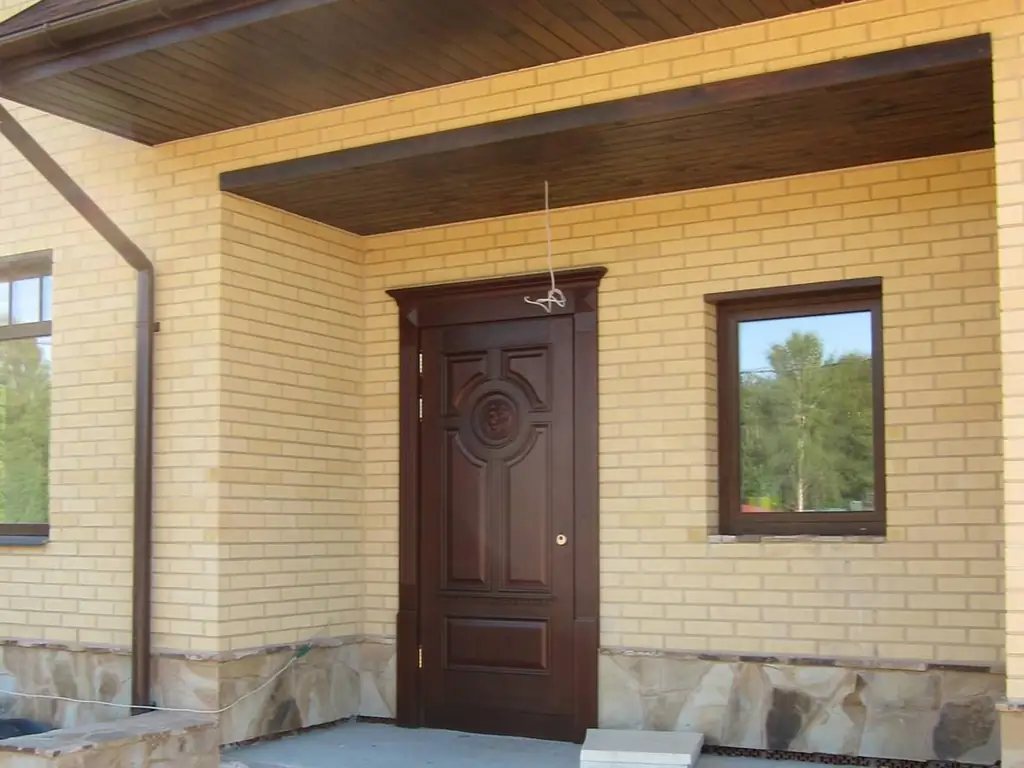
Entrance doors: device, principle of operation and varieties. How to choose and install entrance doors correctly. Tips for operation and repair
Aluminum Doors: Types, Features Of Manufacture And Installation, As Well As Repair And Adjustment Of Faults
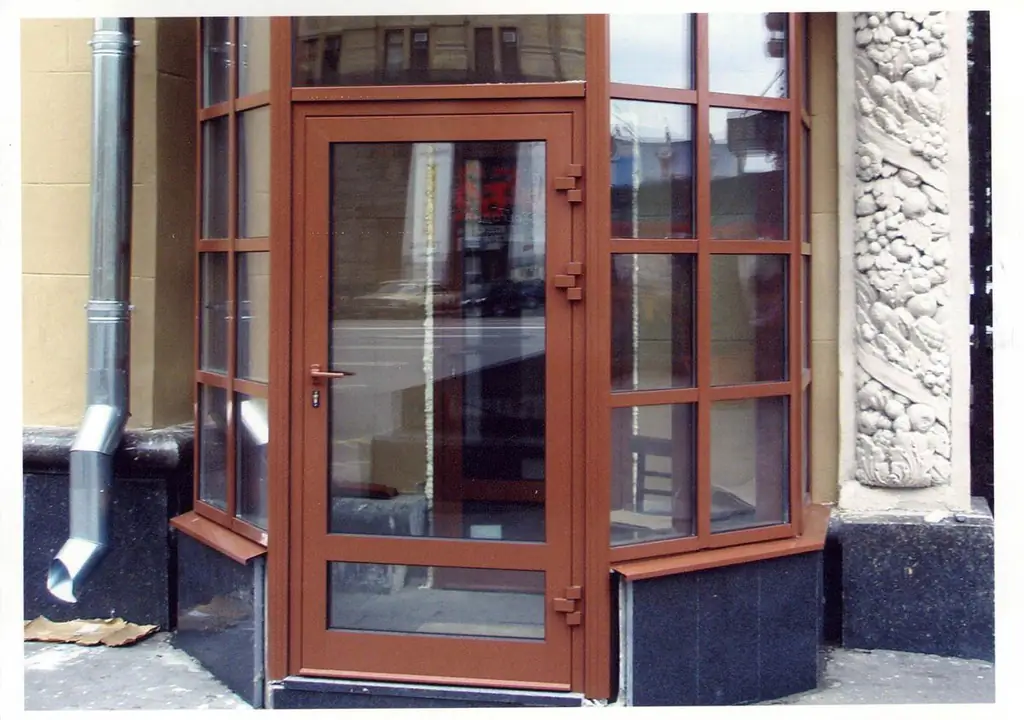
Technical characteristics and design features of aluminum doors. Applications and modifications. Installation work for the installation of an aluminum door
What Doors To Put In The Bathroom And Toilet: Varieties And Materials Of Manufacture, And Also What Should Be Guided When Choosing
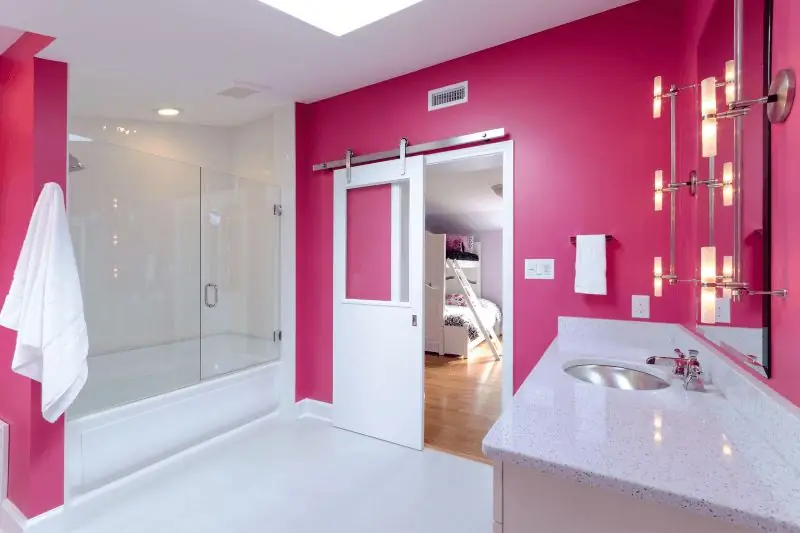
Doors for toilet and bathroom: characteristics, features, installation, operating rules, consumer reviews
MDF Doors: Entrance And Interior Doors, Their Varieties With A Description And Characteristics, Advantages And Disadvantages, As Well As Installation And Operation Features
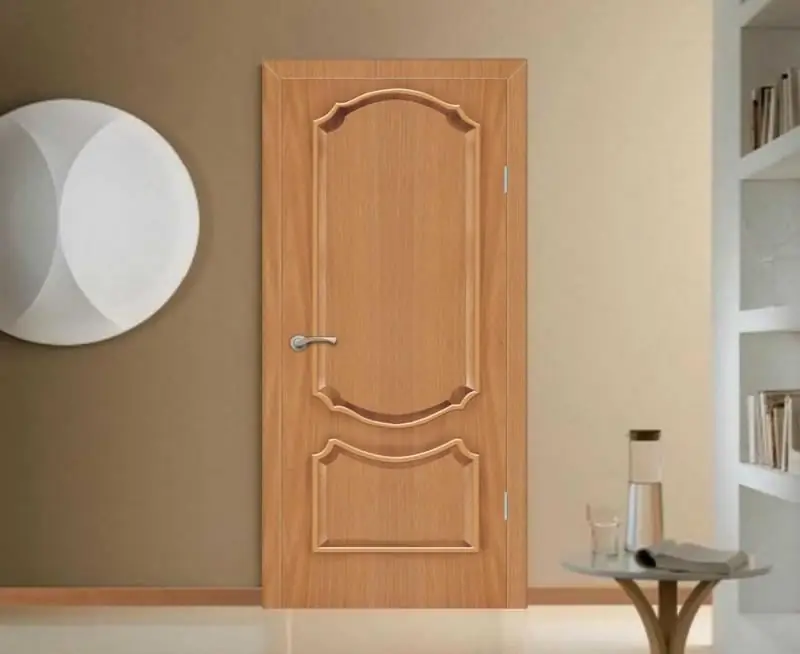
Doors from MDF: features, characteristics, varieties. Making and installing MDF doors with your own hands. Door restoration. Reviews, photos, videos
Installation Of Fire Doors: How To Properly Carry Out The Installation And What Regulatory Documents Must Be Followed
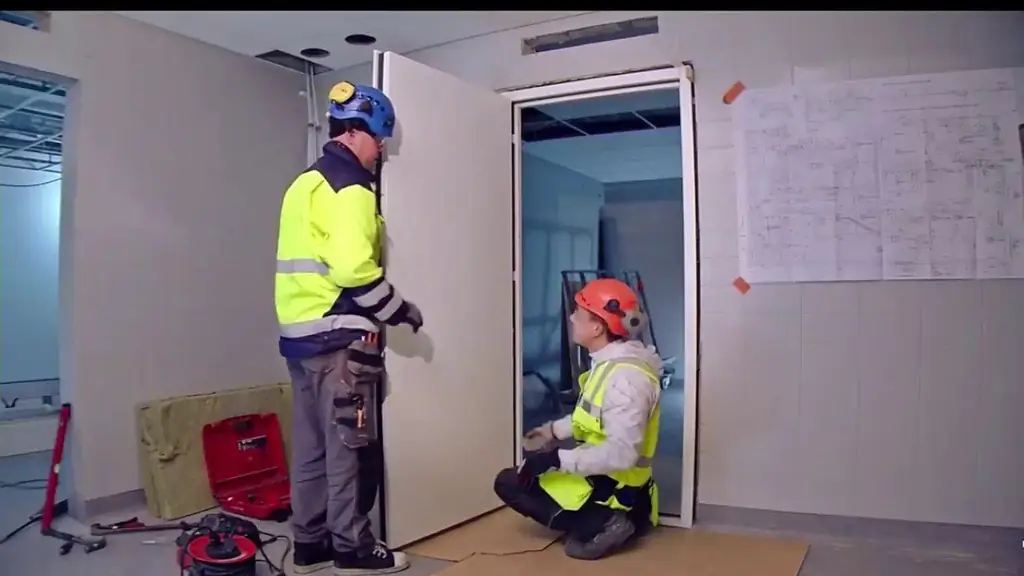
Fire doors installation technology, for which premises they are suitable. Features of service and repair
